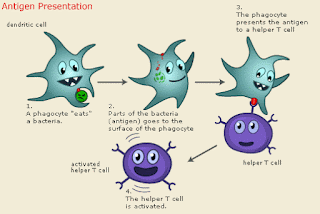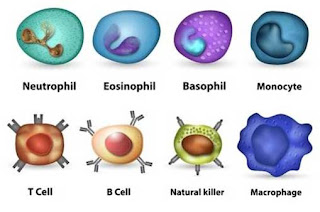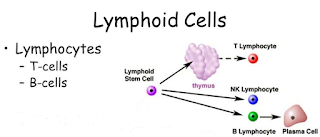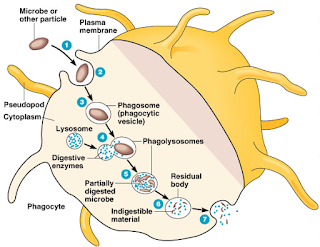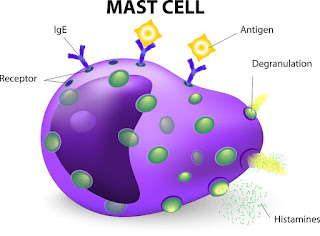As we are moving further in the better understanding
of Immune System, today’s blog is
about,
·
What is Adaptive Immunity or Acquired
Immune System ?
·
How Immune System detects pathogens
inside our body ?
·
What Immunity do to meet its goal
of being defensive ?
·
How a specific biological or
Immunological memory is created ?
·
What are the differences between
Innate Immunity and Acquired Immunity ?
Okay
Guys!! No Worries.
In this post we are going to cover each and every biotechnological aspects of Immune System, which in turn will cover all these questions.
We, as humans, are blessed with two types of Immune System. They are,
Ø Innate or Natural Immunity
Ø Adaptive or Acquired Immunity
Innate
or Natural Immunity was very well explained in the last
post 'Innate/ Natural Immunity' to
clear all your doubts.
Here, we will study about the Adaptive or Acquired Immune response for better understanding of Immunity process or Immune
System.
Adaptive
Immunity or Acquired Immunity :
Only
vertebrates have adaptive immunity.
It ‘remembers’
the previous infection and so has tremendous survival in pathogen filled
environment.
Therefore, it is referred to as Adaptive Immunity or Acquired Immunity.
 |
| Adaptive Immunity |
The adaptive
or acquired immune response comprises of
specialized cells and processes to kill pathogens or prevent their
attack.
The adaptive
immune system is focused towards specific
targets.
This immune system provides stronger attacks each time a particular pathogen is encountered.
The major
characteristic attributes of adaptive
or acquired immunity are:
·
Self
and non self recognition
·
Antigenic
Specificity
·
Diverse
Immunologic memory
1.
Why
‘adaptive’ ?
It is ‘adaptive’
because our natural defender or body’s immune system prepares itself for future
pathogenic encounters.
2.
Being
‘specific’ in action :
A layer of
protection i.e. adaptive immune system is activated if the pathogen make
its way in our body by evading the innate immune system.
Thus adaptive or acquired immune system adapts its
response during an infection, in being specific
and improve in reorganization of the pathogens.
3.
Property
of memory
After killing or removal of pathogens, B cells and T cells continues their
working mechanism, which creates an ‘Immunological
memory’.
These cells make adaptive or acquired immune system
to work stronger and faster each time there is a pathogenic encounter.
Agents
of Adaptive or Acquired Immunity:
The adaptive or
acquired immune response work under two
types of mechanism. They are :
Ø Humoral
Immune response
Ø Cell
mediated Immune response
Ø Humoral
Immune response :
The production of immunity by administration of antibodies from an immune person.
Ø Cell
mediated Immune response:
Immune response produced only by administration of T cells from an immune individual.
This immune response plays an important role in lysis of tumor cells and virus infected cells.
1.
Cells
involved in Adaptive or Acquired Immunity :
Adaptive
or Acquired Immune response categorizes the cells involved
into two types:
a)
Lymphocytes
b)
Antigen
presenting cells
Above mentioned both the cells i.e. (lymphocytes and
antigen presenting cells) are explained in previous post 'Cells Of Immune System' , but here we
will study then with a different perspective.
a) Lymphocytes
:
The lymphatic
system carries infection fighting cells, which are involved in removal of
foreign material i.e. pathogens and cell debris known as lymphocytes.
 |
| Lymphocytes |
The lymphocytes are categorized into two types:
Ø T cells
Ø B cells
Readers can visit my previous post to get into the concepts of T cells and B cells mentioned below.
Ø T Cells :
1.
The
working process of T cells starts in our body, as soon as they have a combat
with the cells.
2.
These
cells can be B cells or dendritic cells, which have digested an antigen and are
showing antigen fragments linked to T cell’s MHC (Major Histocompatibility Complex) molecule.
3.
The
MHC- antigen complex activates T
cell receptor and cytokines are
secreted by T cell.
4.
These
cytokines help T cell to mature.
5.
Some
cytokines increase the growth of more T cells.
6.
Some
of the T cells become cytotoxic (Tc) and kill viral infected cells.
7.
Some
T cells become helper cells (Th) and secrete cytokines to attract
fresh macrophages, neutrophils, other lymphocytes and other cytokines to
monitor and direct them, once they reach the site of infection.
The working mechanism can be better understood by the
following graphical representation.
 |
| T cell Mechanism |
Ø B cells :
B cells create
and secrete antibodies which target pathogens and attach with them. This
enhances the destruction of pathogens by other parts of immune system.
B cells work in the following pattern:
1.
Antibody (Ab) or Immunoglobin(Ig) receptors present on B cell
surface recognize and attach to antigens
(Ag) and process of destruction or
deactivation of foreign invaders is activated.
2. Inside B cell, a fragment of antigen combines with Human Leukocyte
Antigen (HLA) class II.
3.
This
human leukocyte class II- antigen fragment
complex is displayed on B cell surface.
4.
T
helper cells (Th) receptors recognize HLA class II- antigen fragment
complex gets activated and produce cytokines, in turn activating B cells.
5.
B
cells activated by cytokines start replication or expand clonally.
6.
Some
of the B cells become antibody (Ab)
producing plasma cells.
Diagrammatically, the process can be explained as
follows:
b) Antigen
presenting cells:
These cells are clarified in the previous post 'Cells Of Immune System'
and now
we will extend our knowledge to make the topic more logical and understandable.
1.
A
pathogen or extracellular antigen (Ag) is phagocytized
by an antigen presenting cells or more likely a dendritic cell and gets into a
vesicle.
2.
Lysosomes
digest the ingested pathogen to extract their antigen.
3.
The
antigen binds with the major
histocompatibility complex (MHC) protein which enter the vesicle.
4.
The
MHC protein having antigens release from the vesicle and travel to the outer
surface of cell membrane.
5.
The
dendritic cells present antigens (Ab) , which in turn activates T cells, which bind with the major
histocompatibility complex (MHC) protein.
I hope, I have made myself very much clear to my
readers in understanding of the topic “ Adaptive
or Acquired Immunity ”.
Moving on, now we will discuss about the major
differences between two types of immunity i.e. Innate Immunity and Adaptive
Immunity.
Difference
between Innate Immunity and Adaptive Immunity :
S.No.
|
INNATE
IMMUNITY
|
ADAPTIVE
IMMUNITY
|
1.
|
Found in all forms of life
|
Found only in vertebrates
|
2.
|
First line of
defense
|
Second line of
defense
|
3.
|
Non – specific response
|
Antigen
specific
response to pathogens
|
4.
|
Provides immediate action
|
Lag time in activation
|
5.
|
No
immunological memory
|
Possess immunological memory
|
6.
|
Effector molecules are cytokines
|
Antibodies being the effector
molecules.
|
I hope this will clear all your doubts.
I would suggest you to check all my previous posts
as well to get the insight of all these topics and help you in forming your
basics on Immune System in Biotechnology.
Still have lot more to share, Stay connected.
Thank
you & Happy Biotechnology Learning!!!


